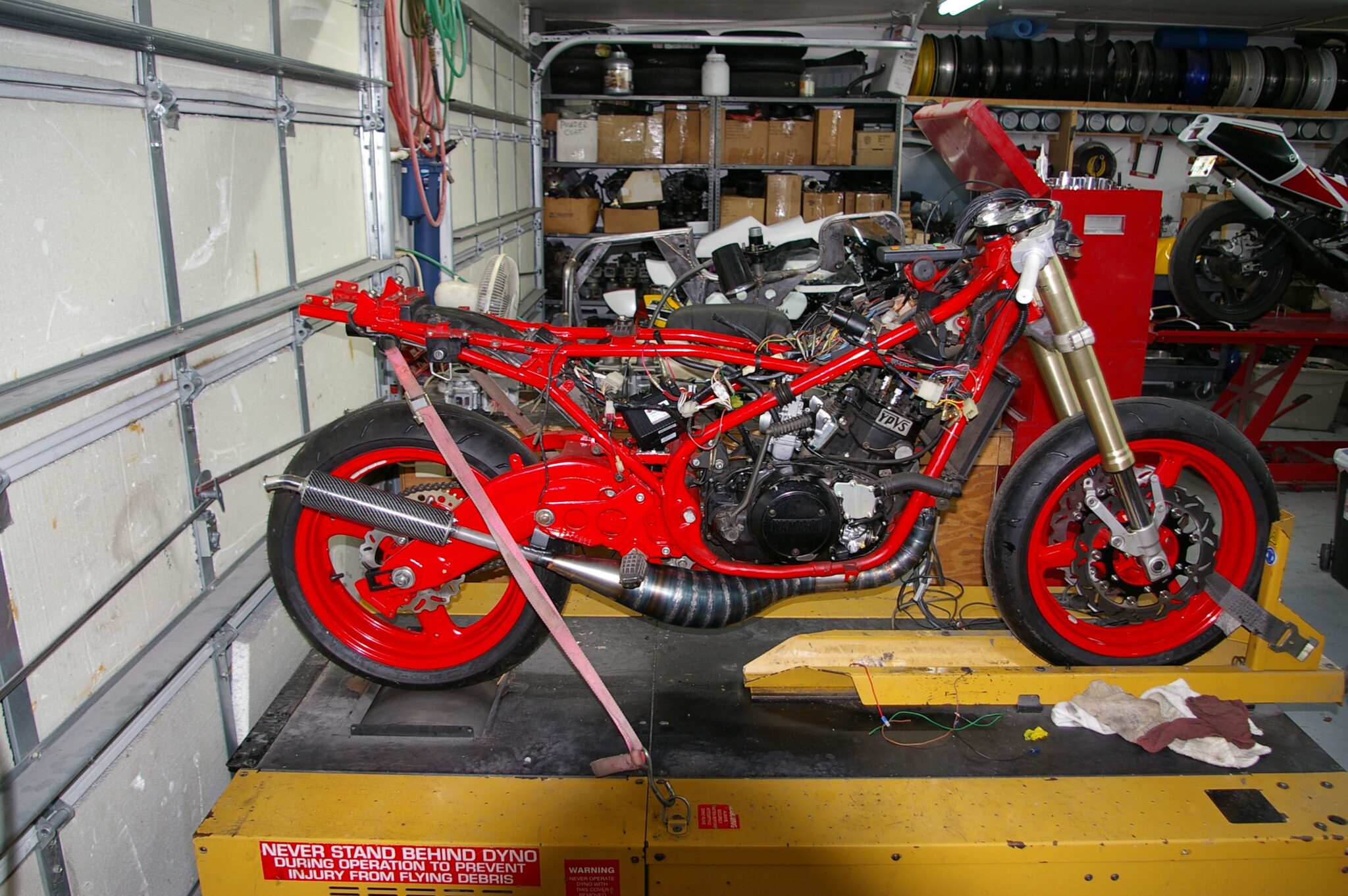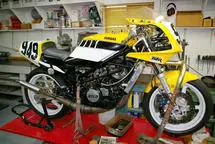
Dyno Testing
To test any engine on performance and compare results between dyno runs a strict data gathering and testing criteria must be followed. The first is a data acquisition system with all the proper sensors and programs to give corrected results due to atmospheric changes, jetting changes, engine operating temperature, exhaust leaks causing O2 changes within the dyno room, etc. The most critical point is to monitor all the EGT/O2 sensors to have a proper comparison.
Example:
If you do a dyno run and have 1100 degree EGT reading. Install a different reed cage and lose horsepower. If the EGT reading shows 1000 degrees and the O2 sensor shows a slightly richer air/fuel mixture, that could be why there is a loss of HP. Adjust the jetting to match the exact same EGT/O2 reading and then compare dyno results. This is the only way to truly compare results. Almost any changes to exhaust, porting, intake, compression, timing, etc, will affect the air/fuel ratio in some way. It is an endless time-consuming task that is so important to get proper horsepower readings. Then add track testing and back to the dyno. I have 1,000’s of dyno hours and 1,000’s of racetrack miles and street riding to back up all the data.
1: Computer corrected data acquisition system.
2: Additional air sensors to check for any exhaust gas contamination in the dyno room. If there is a leak the oxygen level will change in the room and the horsepower ratings will be affected. I see photo’s and video’s of shops doing dyno runs and the room is full of exhaust smoke. The air is contaminated with O2 and the dyno run will not be accurate.
3: All testing must be done at the same fuel/air ratio. On a 2-stroke engine I have found that the Exhaust gas temperature gauge to be the most effective. The oil in the exhaust will foul most O2 sensors in a short period of time. Whatever jetting baseline, (EGT temp & O2 readings), you start with it must be maintained between all runs. If you are testing at 1200 degrees EGT and change to a different reed valve and the fuel/air ratio changes or EGT drops the jetting needs to be readjusted back to the same 1200 degree EGT/O2 baseline. If you do not keep this baseline all the test results will not be correct.
4: Computer controlled acceleration curve that can be exactly duplicated on each run.
5: Complete air flow control and computer monitoring within the test cell or dyno room.
